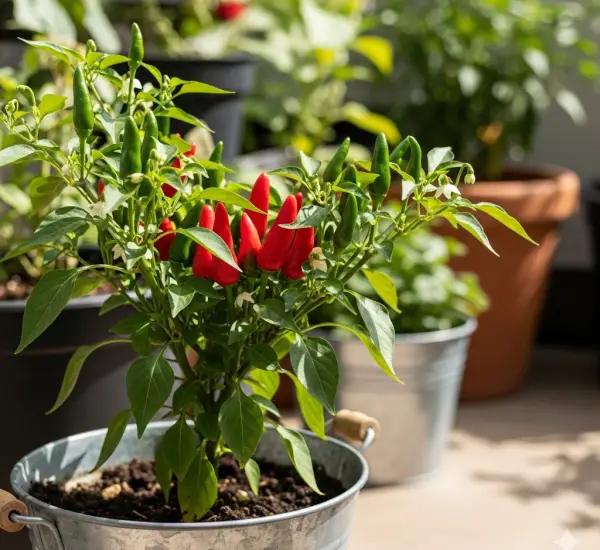Fresh, homegrown potatoes are a treat that every gardener should experience—and you don’t need a traditional garden bed to grow them. With potato bucket gardening, even beginners with limited space can enjoy a bountiful harvest of delicious, earthy potatoes. Whether you have a balcony, patio, or a small backyard, all you need is a bucket, soil, and a few seed potatoes to get started.
This beginner-friendly guide covers everything you need to know to grow potatoes successfully in buckets—from choosing the right variety to harvesting your first crop.
Why Grow Potatoes in Buckets?
Potatoes grow surprisingly well in containers, and buckets are one of the most affordable and practical options. Here are some benefits of growing potatoes in buckets:
-
Space-saving: Ideal for balconies, patios, or small yards.
-
Easy harvesting: No digging—just dump out the bucket when it’s time to harvest.
-
Fewer pests: Growing off the ground reduces exposure to common soil pests.
-
Soil control: You can create ideal growing conditions by choosing the right soil mix.
-
Portability: Move your buckets to catch more sunlight or protect from weather.
For beginners, container gardening with buckets is a simple and rewarding introduction to growing your own food.
Choosing the Right Potatoes
Not all potatoes are created equal when it comes to container gardening. Choose early or mid-season varieties, which mature faster and are better suited to buckets.
Best varieties for containers:
-
‘Yukon Gold’ – Creamy and flavorful; great all-purpose potato.
-
‘Red Norland’ – Quick-maturing and ideal for boiling or roasting.
-
‘Fingerling’ varieties – Small, slender potatoes that grow well in tight spaces.
-
‘Charlotte’ – A waxy salad potato with great flavor.
Look for certified seed potatoes from a nursery or garden center rather than using store-bought potatoes, which may carry disease or have been treated to prevent sprouting.
What Size Bucket Do You Need?
Use a bucket that’s at least:
-
Size: 5 gallons or more
-
Depth: 12 to 16 inches
-
Drainage: Drill 4–6 holes in the bottom for proper drainage
Food-grade plastic buckets are safe and affordable. You can also use fabric grow bags, large tubs, or even stackable containers.
Preparing the Soil
Potatoes need loose, well-draining soil that allows tubers to form easily.
Ideal soil mix:
-
50% high-quality potting soil
-
30% compost (for nutrients)
-
20% perlite or coconut coir (for drainage and aeration)
Avoid heavy or clay soil, which can cause poor root development and rot.
How to Plant Potatoes in Buckets
-
Chit the potatoes (optional but helpful): A week before planting, place seed potatoes in a bright, cool spot to encourage sprouting.
-
Add 4–6 inches of soil to the bottom of the bucket.
-
Place seed potatoes (cut into chunks with at least one eye, or use whole if small) on the soil surface.
-
Cover with 3–4 inches of soil.
-
Water gently to settle the soil.
Depending on the size of your bucket, plant 2–3 seed potatoes per container.
Caring for Your Potato Plants
Watering:
Keep the soil evenly moist, especially once plants are established and tubers begin to form. Avoid waterlogging, which can lead to rot.
Sunlight:
Place buckets in a location with 6–8 hours of sunlight per day. Potatoes thrive in full sun.
Hilling:
As the plants grow (about 6–8 inches tall), add more soil around the base, covering the stems but leaving the top leaves exposed. Repeat this process every couple of weeks until the bucket is nearly full.
This “hilling” encourages more tuber growth along the buried stems.
Fertilizing
Potatoes are moderate feeders. Mix compost into the soil at planting and consider feeding with a balanced, organic fertilizer every 3–4 weeks during the growing season. Avoid high-nitrogen fertilizers, which encourage leaf growth at the expense of tubers.
Common Issues and Troubleshooting
-
Yellowing leaves early: Could indicate overwatering or poor drainage.
-
Small tubers: May be due to inadequate sunlight or shallow planting.
-
Pests: Watch for aphids or potato beetles. Neem oil or insecticidal soap can help.
Keep an eye out for signs of disease like blight—remove affected leaves immediately.
Harvesting Your Potatoes
Most varieties are ready to harvest 10–12 weeks after planting for “new potatoes” or up to 16 weeks for full-sized ones. The easiest way to tell is when the plants begin to yellow and die back.
To harvest:
-
Stop watering once the leaves yellow.
-
Wait about 1–2 weeks, then gently tip the bucket over.
-
Dig through the soil with your hands and collect your potatoes.
Let them air dry before storing in a cool, dark place.
Final Thoughts
Potato bucket gardening is a fun, low-maintenance way for beginners to grow their own fresh food—no matter how little space you have. With the right container, good soil, and some sunshine, you can enjoy a rewarding harvest of flavorful, homegrown potatoes straight from your balcony or patio.
So grab a bucket, some seed potatoes, and start planting—you’ll be digging up delicious spuds in no time.



